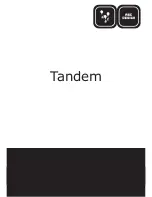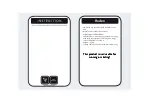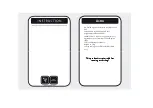
CHAPTER 5.0 Functional Overview
5-58
CDS7324 (FORMERLY LSF-0819)
Rev. A
INSTALLATION & USER’S MANUAL
5.12.3.1 Fatal Fault
If the drive detects a fatal fault, it immediately disables the power stage of the drive. If the drive is set to internal
brake control,
brake_control_fault (Field Number
1505
)
= 1 (default setting), the drive will also apply the brake
immediately. If it is set to 0, then the drive will disable the power stage but application of the brake is left to the
user. Typically, the user would in this case, control the brake with a digital input.
Fault Type
Drive Reaction
External Brake control
Internal Brake
control
Fatal
Immediate Disable
Brake not applied
Brake Applied
5.12.3.2 Non-Fatal Fault
If the drive detects a non-fatal fault, its reaction depends on a number of parameters. The action of the drive is
detailed below. On detection of a non-fatal fault, the drive immediately decelerates the drive to zero speed at the
drive deceleration limit,
deceleration_limit_-_fault
(Field Number 1671). Once the velocity falls below the level set
in parameter f
ault_reaction_velocity
(Field Number 1141), the brake is applied. The drive then disables the power
stage after the time set in parameter
brake_bridge_timeout
(Field Number 1004) has elapsed.
If the drive does
not decelerate to a speed below
fault_reaction_velocity
within the time set by parameter
ramp_down_timeout
(Field Number 1143), the drive will disable anyway and apply the brake .
In each of the cases outlined above, the brake will only be applied if it is under internal control,
b
rake_fault_control
set to 1. As with the fatal fault detailed above, if this parameter is set to 0, then it is up to the
user to manage the application and removal of the brake in fault conditions.
Fault Type
Drive Reaction
External Brake control
Internal Brake
control
Non-Fatal Controlled
motor
deceleration & disable
Brake not applied
Brake Applied
















































